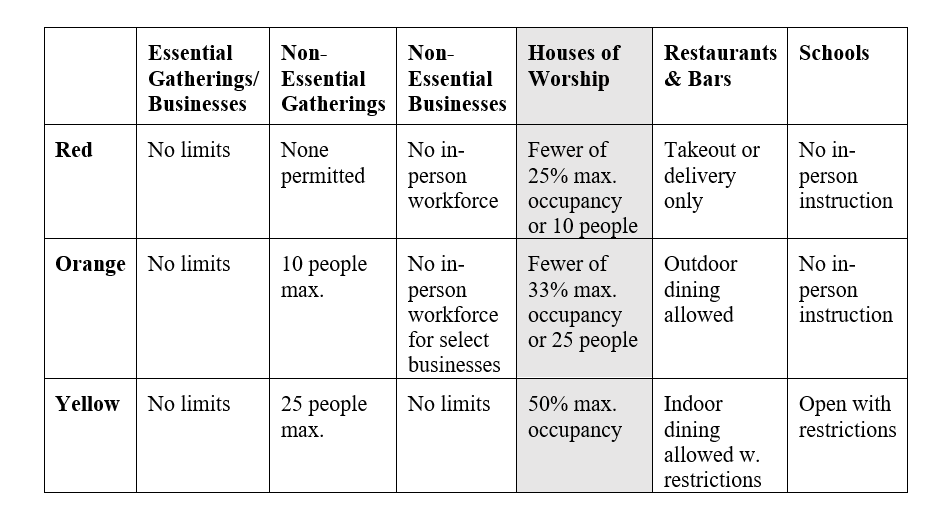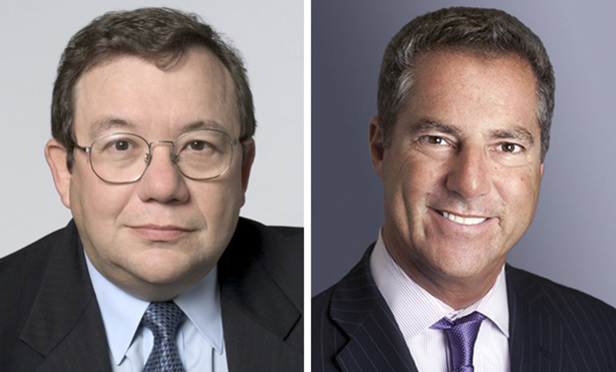Last month, the U.S. Supreme Court enjoined Gov. Andrew Cuomo from enforcing portions of his executive order addressing COVID-19 “hot spots” in New York state. The ruling came less than three weeks after the Second Circuit declined to block the order, holding that it most likely did not infringe upon the First Amendment rights of religious worshippers. The Supreme Court disagreed, holding 5-4 that the attendance limits imposed by Governor Cuomo likely violated the First Amendment by “singling out houses of worship for especially harsh treatment.” Although Governor Cuomo had already lifted the restrictions in question when the Supreme Court injunction issued, the decision has important implications for future cases. This month’s column compares and contrasts the different approaches of the Second Circuit and Supreme Court in Roman Catholic Diocese of Brooklyn v. Cuomo, and discusses the implications of the Supreme Court’s decision.
New Cluster Initiative and Executive Order 202.68
On Oct. 6, 2020, Gov. Andrew M. Cuomo announced a “new cluster action initiative” to address certain COVID-19 “hot spots” identified in New York state. As codified in Executive Order (EO) 202.68, the initiative directed the New York State Department of Health (the DOH) to identify yellow, orange, and red “zones” based on the severity of outbreaks and imposed correspondingly severe restrictions within each type of zone. The following chart provides a high-level summary of the restrictions imposed upon regions designated red, orange, or yellow by the DOH.



 Martin Flumenbaum and Brad S. Karp
Martin Flumenbaum and Brad S. Karp




